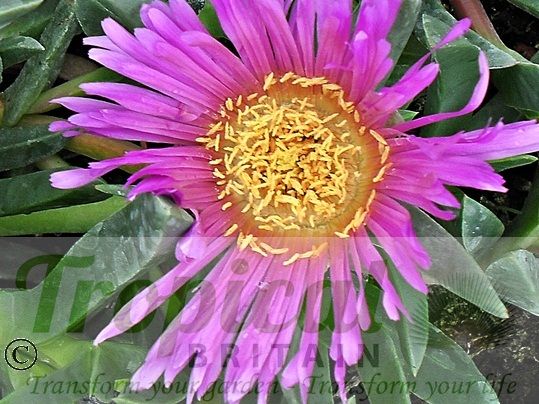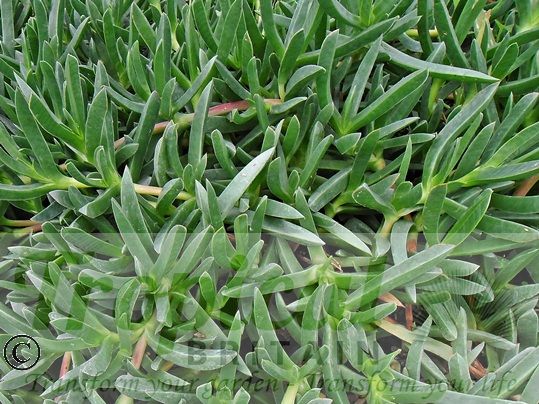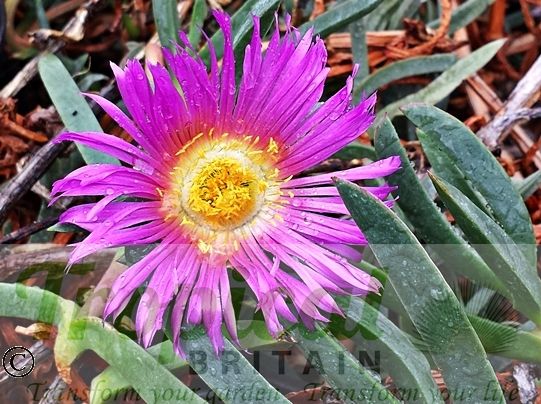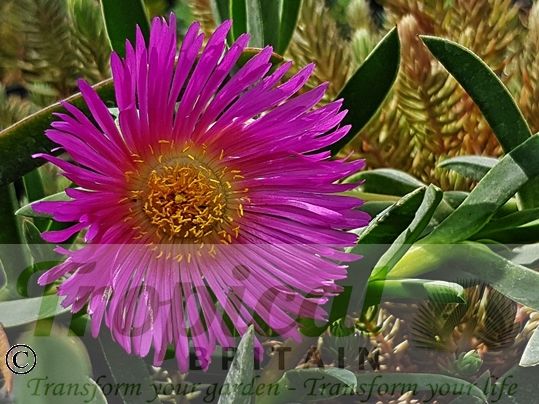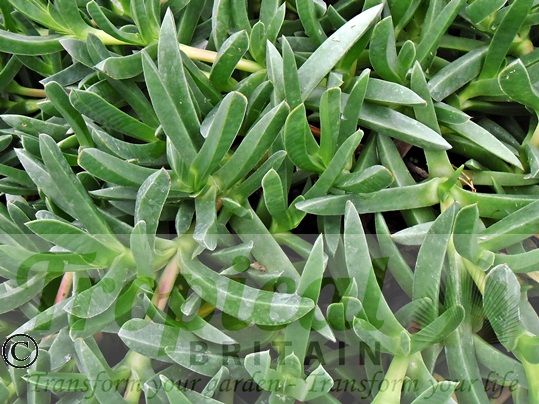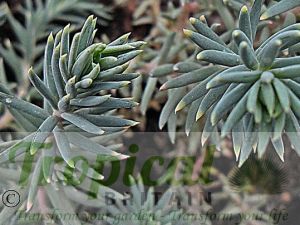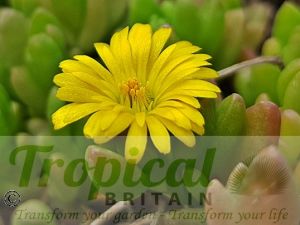Carpobrotus chilensis, the Sea Fig, is a trailing ground-cover succulent with fleshy triangular leaves and satiny magenta flowers with yellow anthers that open in the morning and close in the evening. The bright almost fluorescent flowers are followed by a small greenish-yellowish edible oval fruit. It forms a dense mat of foliage thriving in sandy well-drained soils or is ideal as a trailing plant draped over stonewalls and masonry.
It is often mistaken for and sold as Carpobrotus edulis, the Hottentot Fig, but it differs from Carpobrotus edulis by having a noticeably smaller flower. However, although listed as a taxonomically correct name, the origins of Carpobrotus chilensis are somewhat obscure. Various species were probably introduced to the New World by Portuguese mariners traveling via South Africa. In Chile there are five South African species: Carpobrotus edulis, Carpobrotus deliciosus, Carpobrotus muirii, Carpobrotus mellei and Carpobrotus dimidiatus together with numerous hybrids between these. These South African species that have naturalised in Argentina, Chile and the Juan Fernandez Islands are all often referred to as Carpobrotus chilensis and have from there been naturalised in other parts of the world. It seems likely that Carpobrotus chilensis is a hybrid and further genetic studies on it need to be done to clarify its taxonomic status.
It is a brilliant carpet-forming scrambler for terrraces and walls and makes a good planting combination with the smaller Delosperma species as well as with Kniphofias and hardy Aloes like Aloe striatula and clumps of Aloe aristata.
It is hardy in coastal areas and urban microclimates and in other districts can be protected with fleece or potted up and brought into a glasshouse for the winter.
Carpobrotus chilensis has the potential to become invasive if used irresponsibly and has already escaped to some beaches in Cornwall. It should never be introduced into a wild area and care should be taken to use this plant with a view to the wider environment. If in doubt, keep it in a terrracotta container.
Additional Information
| Order | Caryophyllales |
|---|---|
| Family | Aizoaceae |
| Sub-Family | Ruschioideae |
| Synonyms | Carpobrotus aequilateralis, Mesembryanthemum aequilaterale, Mesembryanthemum aequilaterale var. decagynum, Mesembryanthemum aequilaterum, Mesembryanthemum chilense, Mesembryanthemum edule var. aequilaterum |
| Geographical Origin | Probably originally from South Africa despite its name and although taxonomically described it is probably a hybrid |
| Cultivation | Full sun, Free-draining soil. Ideal as groundcover amongst a drought-resistant planting, on a terrace or scrambling over masonry. Makes a good low-maintenance house plant while small |
| Eventual Height | 15cm |
| Eventual Spread | Spreading to a wide mat |
| Hardiness | Hardy in coastal areas and urban microclimates. Protect with fleece in colder districts or pot up and bring indoors |

Free DELIVERY
ON ALL ORDERS OVER £99THIS OFFER IS VALID ON ALL OUR STORE ITEMS.

